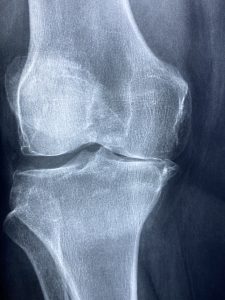The CMRT or chiropractic manipulative reflex technique, is a method for the treatment of vertebral column or vertebral visceral syndromes associated with viscerosomatic or somatovisceral reflexes, dysfunctions in the spinal joint complex and visceral mimicry-type somatic relationships.
Manipulative Reflex Technique (CMRT)
The chiropractic manipulative reflex technique or CMRT was originally called “Bloodless Surgery”. Understand the relationship between somatovisceral and viscerosomatic reflexes. Therefore we are talking about the relationship between the somatic and autonomic nervous systems. The anatomy teacher Raymond Jack Last in his book "Applied Regional Anatomy” comments that:
- " There is only one nervous system. It supplies the wall of the body and extremities (somatic) and the viscera (autonomic). His plan is simple. It consists of afferent (sensory) and efferent (motor) pathways, with association and commissural pathways to connect and coordinate the two. There is no more than this, despite the many pages devoted to its study. "
bloodless surgery
In chiropractic the expression "surgery without blood" describes the treatment of soft tissues that affected an organ and the related vertebral relationship. This term was also used to describe the different methods of manipulation of joints and soft tissues unrelated to the viscera.
James F. McGinnis
McGinnis was a chiropractor who moved to California in the early 1920s. It is this state where he earned a doctorate in naturopathy. Ten years later he became a renowned “bloodless surgery” chiropractic surgeon, traveling throughout the United States to teach this method.
At the same time, Bertrand DeJarnette (developer of the sacral occipital technique) was also practicing this type of technique. In addition, DeJarnette published a book on this subject in 1939 entitled "Technique and practice of bloodless surgery".
DeJarnette continued to practice and teach the “bloodless surgery” during the following years. He began making modifications to use more reflex applications and pain indicators as a method of affecting organ symptomatology. In the 50s he expanded his research on reflexes and their effect on viscera and related vertebrae.
At the beginning of the 60s, he modified the nature of the method “bloodless surgery” of the sacral occipital technique of his initial procedures. These could take from 2 to 4 hours of treatment and preparation, while the current ones could be performed in only 15 minutes.
For this reason, he decided to change the name of his method for affecting referred pain pathways, viscerosomatic/somatovisceral reflexes, and direct organ manipulation to the Chiropractic Manipulative Reflex Technique, or CMRT.
What is the CMRT method?
The CMRT method involves locating and analyzing an affected vertebra in a reflex arc by muscle palpation of the occipital fiber. Once the specific reflex arcs of the vertebrae have been located (verified with the referred pain pathways) and the clinical symptoms, the specific vertebra is isolated. This insulation consists of:
- pain provocation
- Muscle tension
- Vasomotor symptoms
If the vertebral dysfunction is chronic or otherwise unresponsive to spinal chiropractic manipulation, then a viscerosomatic or somatovisceral component is evaluated. Treatment of the viscerosomatic or somatovisceral component is performed by soft tissue manipulation, myofascial release techniques, and reflex balancing methods.
Finally, it should be noted that certain nutritional and dietary modifications may be necessary for an even more positive response.




